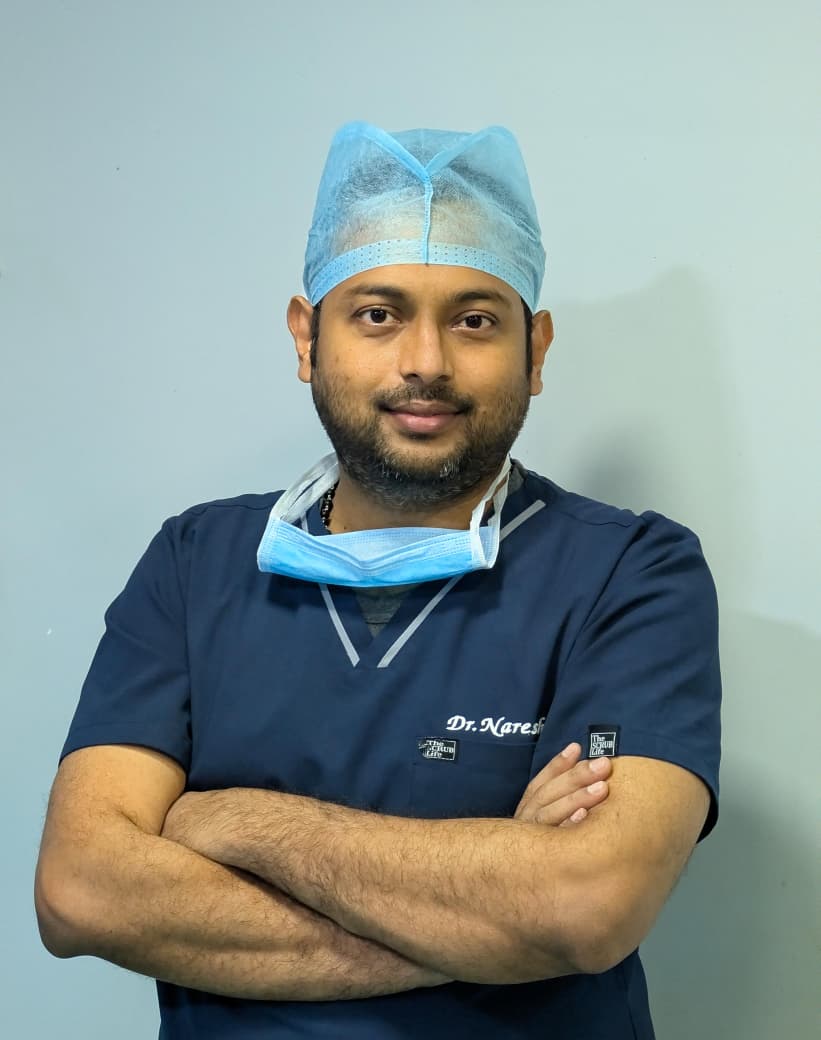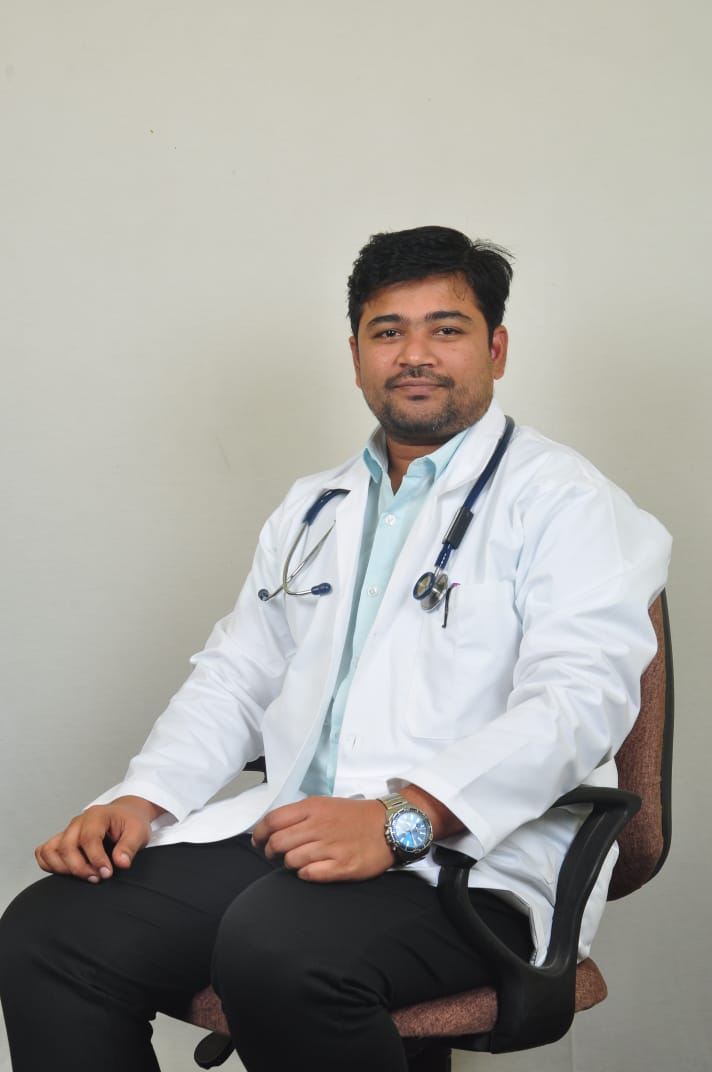Visit HeptaCare Health to undergo safe and effective spine surgery. At HeptaCare Health, we work with some expert and experienced orthopedic surgeons who have ample experience in performing various surgeries, including spine surgery. Book an appointment now.
Happy Patients
Disease
Hospitals
Cities
Spine surgery is a surgical procedure that is performed to relieve a person from pain because of spinal problems. It helps in stabilizing spinal joints and vertebral bones caused due to herniated discs, spinal abnormalities, bone spurs, spine injuries, or spinal tumors. Spine surgery is also known as Endoscopic Spine Surgery (ESS),Minimally Invasive Spine Surgery (MISS), and Arthroscopic Spine Surgery. These advanced techniques do not really affect the nearby muscles and tissues of the spine. Therefore, the pain and recovery duration is lesser compared to traditional spine surgery.
Various types of spine surgery are as follows:
Spinal fusion: Spinal fusions permanently connect two or more vertebrae. You may need a spinal fusion to treat spinal instability, scoliosis, or a herniated disc. During a spinal fusion, the surgeon connects two adjacent vertebrae in order to avoid pain caused by their movement against each other. The surgeon uses small screws and rods to connect the vertebrae, and they are then left to heal and fuse together naturally. The physician may also take a small bone graft from another part of your body to help the vertebrae fuse.
Traditional spine surgery refers to the long-standing, conventional approach used to treat various spinal conditions. It involves making a large incision and dissecting through surrounding muscles and tissues to access the affected area. It has been used for many years and is suitable for complex spinal conditions. The procedures usually require extensive tissue disruption, longer incisions, and longer hospital stays, but they generally yield favorable outcomes.
Minimally invasive spine surgery (MISS), on the other hand, is a newer technique that utilizes advanced instruments and specialized techniques to perform spinal procedures with smaller incisions and minimal disruption to surrounding tissues. The goal of MISS is to minimize muscle and tissue damage, reduce postoperative pain, speed up recovery, and enable a faster return to normal activities. It involves making small keyhole incisions and employing tools such as endoscopes and microscopes to access and treat the affected area. MISS can be used for various spinal conditions, including herniated discs, spinal stenosis, and spinal instability.
The advantages of minimally invasive spine surgery include reduced blood loss, lower infection risk, decreased postoperative pain, smaller scars, and shorter hospital stays. Patients often experience faster recovery and can resume their daily activities sooner. However, it is important to note that MISS may not be suitable for all spinal conditions or patients, and traditional open surgery may still be necessary in complex cases.
The decision between traditional and minimally invasive spine surgery depends on factors like the specific spinal condition, its severity, the patient’s overall health, and the surgeon’s expertise. A surgeon first evaluates the individual’s condition comprehensively to determine the most appropriate surgical approach.
Several factors can lead to the spine surgery, including: back and cervical pain, traumatic injury, and a fracture or loss of function due to spinal cord injury).The pain can result from a variety of degenerative bone and muscle conditions. The following are a few reasons why an orthopedic surgeon may recommend spine surgery-
A doctor usually recommends back surgery in the following conditions:
Pain in arms and legs: The spine consists of bones known as vertebrae, and the spinal cord runs through the center of these vertebrae. Some nerves travel between each vertebra and affect different areas of your body. If these nerves in the lower back get damaged, you are likely to experience radiculopathy or pain that radiates to your arms and legs.
The most common causes of radiculopathy are herniated discs and bone spurs. When your disc herniates, the soft inner layer pushes through the outer layer and presses on the surrounding nerves. You can have pain in either your arms or legs, depending on which nerves it presses on.
Bone spurs form because of osteoarthritis in the spine. Osteoarthritis wears down the cartilage between the bones, and as a result, the bones rub together and form bone spurs.Surgery for radiculopathy is effective because it relieves the pressure on the nerves. So, if you have constant pain that radiates, it’s time to see a spine surgeon.
Constant Back Pain:If you have constant severe back pain, a doctor will likely suggest back surgery. Most of the time, back pain is acute, and it lasts anywhere from a few days to less than 12 weeks, and there is no loss of function or symptoms that linger. However , chronic back pain continues for at least 12 weeks or longer, even after you’ve had treatment for the initial injury. There are different treatment options for back pain that include:
If you’re still experiencing constant pain despite these treatments, you’ll need to see a spine doctor to discuss surgical options that will give you the back pain relief you need.
Experiencing reduced mobility: Constant back pain can also affect your ability to move normally. Chronic back pain often prevents you from taking hikes or playing sports. You may also find it limits your mobility at work, prevents you from doing your job, or affects your ability to work in certain industries.
If you’ve had to change your life completely because of back pain, then you must undergo spine surgery. Spine surgery can often reduce your pain, increase your mobility, and give you back control of your life.
Numbness or weakness in your legs: Having numbness or weakness in your legs is not a symptom to ignore for a long period. Conditions like spinal stenosis or narrowing of the spine can cause numbness and weakness. Spinal stenosis typically occurs with age and can happen in any part of your spine, but it most commonly occurs in your lower back or lumbar area.
If you have lumbar spinal stenosis, you will likely notice trouble walking long distances. You are likely to experience pressure on your back.
Usually, you won’t have many symptoms at first, but as the condition worsens, you can develop symptoms like
Numbness and weakness can also be caused by disc herniation, tumors, or infections of the spine. If you have ongoing numbness or weakness in your legs, you’ll need to see a spine doctor for a thorough evaluation of your spine.
Spinal Deformity That’s Progressing: Spinal deformities result from abnormal curvature or rotation of the spine, and the most common spinal deformity in adults is scoliosis.
Scoliosis in adults often results from wear and tear to the back because of age or past back surgeries. You can have a minor curvature that continues to progress over time and eventually causes deterioration to your vertebrae and compresses organs like the lungs. If you’re already being treated for scoliosis and are feeling worsening symptoms of pain, numbness, weakness, and back stiffness, talk to a doctor about your surgical options.
Spinal Fracture: Severe back injuries can result from car accidents, a fall from a significant height, or a sporting event, and many times, a severe back injury results in a spinal fracture. In some cases, automobile accidents cause extension fractures which occur when vertebrae tear apart. You can also get a transverse process fracture where the spine bends or rotates sideways.
Treatment depends on the severity of the fracture, and it often takes up to 12 weeks to heal. You may require physical therapy and need to wear a back brace. However, sometimes conservative treatments aren’t enough, and you can often have lingering pain, along with numbness and tingling. If you have a spinal fracture, talk to a surgeon right away. There are minimally invasive options like laser spine surgery that can fix the damage and speed up the recovery process
Few diagnostic tests to understand the severity of the condition and identify any underlying health condition that may complicate the surgery. Some common diagnostic tests are as follows:
Spine surgery requires preparation on both physical and mental levels. The doctor is likely to provide the patient with all required guidance depending on the severity of the damage. However, here are a few points that may come in handy for anyone planning spine surgery:
Endoscopic spine surgery is a specific type of spine surgery. It is a minimally invasive procedure for treating spinal conditions. It involves the use of an endoscope, which is a thin, flexible tube with a camera and light source at its tip.
Prior to endoscopic spine surgery, a doctor recommends a comprehensive evaluation, including a physical examination and diagnostic tests. A surgeon explains the procedure, discusses the associated risks and benefits, and addresses any questions you may have before the procedure. The surgery is performed under the influence of general anesthesia, rendering you unconscious throughout the procedure. In some cases, local anesthesia with sedation may be used instead.
During the surgery, a surgeon makes small incisions, usually less than an inch in length, near the affected area of the spine. Through these incisions, specialized instruments and a small endoscope is inserted. The endoscope helps in providing real-time visual images of the surgical site on a monitor, enabling the surgeon to observe the affected area, including the spinal discs, nerves, and surrounding tissues, without the need for a large incision.
Using the endoscopic instruments, the surgeon assesses and prepares the target area. This may involve removing a small portion of the bone or soft tissue to reach the spinal structures causing compression or instability. The specific steps usually depend on the purpose of the surgery, such as decompression, fusion, or disc herniation repair.
Once the surgeon has gained access to the affected area, they carry out the necessary treatment or repair. This may include removing herniated or damaged disc material, repairing a disc, fusing vertebrae together, removing bone spurs, or performing other corrective procedures. After completing the necessary surgical steps, the surgeon removes the instruments and closes the incisions. Typically, the small incisions can be closed using sutures or adhesive strips, often without the need for stitches.
Following the surgery, a healthcare provider takes you to a recovery area, where you are monitored as you regain consciousness from anesthesia. Pain medication and supportive measures may be provided to manage any discomfort. The length of your hospital stay will depend on the extent of the surgery, and you may be discharged on the same day or after a short period of observation.
After endoscopic spine surgery, a doctor usually prescribes a rehabilitation program to aid in the recovery of strength, flexibility, and mobility. This may involve physical therapy and specific exercises. Your surgeon provides instructions for postoperative care, including any restrictions or limitations on activities, and schedules follow-up appointments.
The benefits of MISS are as follows:
Like any surgical procedure, spine surgery also carries certain risks and complications. The potential complications of spine surgery include:
Some long-term complications involved in spine surgery are as follows:
The average cost of spine surgery in India typically ranges from around INR 150500 to INR 370000. This is the average cost of surgery, the final cost can vary depending on various factors, including:
Recovery and results after spine surgery can vary depending on the type of surgery performed, the specific spinal condition being treated, and how well they follow postoperative instructions. Here are some general guidelines to follow after spine surgery:


Based on 7721 Recommendations | Rated 4.68 Out of 5
Happy Patients
Clinics
Cities
Surgeries
Doctors
Hospitals
Getting an accurate diagnosis can be one of the most impactful experiences that you can have.

cure with care
Copyright © 2025. All rights reserved.
Consult with our expert surgeon for more than 50+ diseases
Happy Patients
Hospitals
Cities